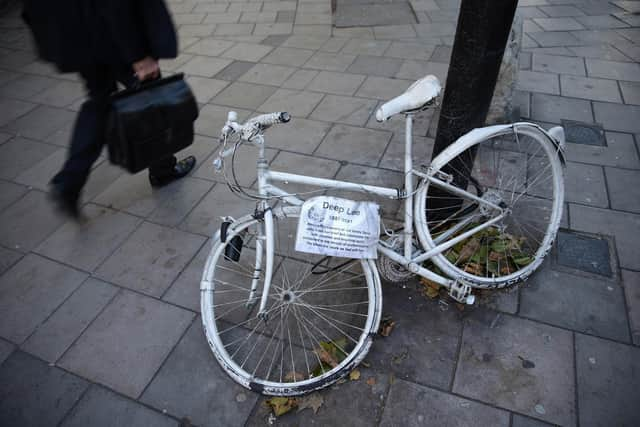Edinburgh must take cyclists' safety seriously - Jodi Gordon
This all sounds extremely positive but what does it really mean in practice for those currently walking, wheeling and cycling around Edinburgh and will any changes be imminent?
There is recognition by the council that the junctions were historically designed to maximise vehicle movement with little regard for pedestrian safety. This is despite the areas in question being pedestrian dominant.
Advertisement
Hide AdAdvertisement
Hide AdFast forward eight months to January 2024 and the council has now announced it will prioritise the Sir Harry Lauder junction in Portobello for review after two cyclists lost their lives there in 2019 and 2020. Both Heather Stronach and Stuart Elliot died after HGVs collided with them.


This particular junction was No 5 on their list of top ten. It is unclear as to the criteria which now determines that this junction should take priority. However, we certainly welcome any changes to road infrastructure that increases road safety for the most vulnerable.
While this first step towards action is welcomed, it does come with a caveat. It is thought that it is likely to be two years before any work is started because of the time required to process traffic orders and consult. This means that by the time any changes are made, it will have been seven years since the passing of Stuart Elliot and six since Heather Stronach.
So, the question must be asked, how long is too long for the council to take action? How many more fatalities could occur during that two-year process and if this junction is deemed a priority, how long until we see changes to the top four (West End, Tollcross, Haymarket and East End) most dangerous junctions in our city?
While we appreciate there must be adequate time for consultation and of course, funds for the work to be carried out, the council cannot look to promote cycling being a “natural choice for local and longer trips around the city, with safety no longer being seen as a significant barrier” by 2030, if it holds off tackling the incident hotspots.


There must be confidence that the council is prioritising public safety and taking this data seriously. For many commuters into the city centre, they could have to navigate three of the top four junctions on a regular basis.
Zhi Min Soh lost her life in 2017 at the West End of Princes Street and the location of her incident is number one on the most dangerous list. We are now close to the seventh anniversary of her death and yet no further forward on when improvements will be made. How can the council seriously promote Edinburgh as being a cycle ‘friendly’ city when faced with the stark reality that people are losing their lives on their commute, but you could wait for close to a decade for safety changes to be made?
Jodi Gordon is a Partner, Cycle Law Scotland
Comments
Want to join the conversation? Please or to comment on this article.